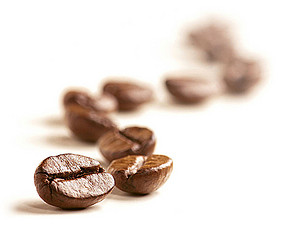Introduction of climate-graded taste producing areas of Manor Coffee in Honduras
Follow the caf é (Wechat official account vdailycom) and found that Beautiful Cafe opened a small shop of its own.
Honduras is now the largest coffee producer in Central America, but little is known about how coffee got here. The quality of coffee in this area was first discussed in the literature in 1804, because coffee trees have to grow for several years to produce fruit, so it can be concluded that coffee arrived in Honduras no later than 1799.
Coffee production in Honduras did not grow significantly until 2001. Although the coffee industry was of great help to the development and infrastructure construction of most Central American countries in the 19th century, the coffee industry in Honduras developed very late and lagged behind other countries as a whole. This poses a challenge to improving the quality of coffee, and it also indicates that the coffee produced by the recent industrial expansion has directly entered the commercial coffee market, and it is not until recently that excellent coffee from Honduras began to appear on the market.
The Honduran Coffee Association (IHCAFE) is the official coffee organization established by the government in the 1970s to improve the quality of coffee. Each of the six producing areas defined by the agency has a coffee tasting laboratory to assist local producers.
Honduras produced nearly 6 million bags of coffee in 2011, more than the combined annual coffee production of Costa Rica and Guatemala. About 110000 households in the country are engaged in coffee production. The presence of coffee leaf rust has raised concerns about the future of the industry; harvests in 2012 and 2013 were severely reduced by leaf rust and a national state of emergency was declared. The effects of leaf rust usually last for several years.

Problems caused by climate
Although the land in the country is ideal for growing coffee, extremely high rainfall makes it difficult to dry coffee. As a result, some producers use both solarization and mechanical drying. As a result, Honduras is thought to be able to produce excellent coffee, but quickly loses its flavor. Nowadays, the industry has made great efforts to improve this issue. Many coffees are stored near Puerto Cortez for a while before they are exported. The local climate is extremely hot, which further reduces the quality of coffee. Of course, there are many exceptions. Most of the best quality coffee in Honduras can stand the test of time.
Coffee grading
The grading system used in Honduras is similar to that in El Salvador and Guatemala, where coffee is described and classified by altitude. More than 1200 meters are Strictly HighGrown (SHG) and over 1000 meters are HighGrown (HG). Although there is a relationship between altitude and quality, coffee so marked is usually less traceable. On the other hand, coffee with production and marketing experience is often marked in this way.
Coffee taste
Honduran coffee has a wide variety of flavors, the best of which bring complex fruit aromas and vibrant, juicy acidity.
Production and marketing resume
For the most part, Honduran coffee has a considerable degree of production and marketing experience and may come from manors, clear common cooperatives and producer groups.
Producing area
Population: 8250000
2013 production (60 kg / bag): 4200000 bags
Although the province of Santa Barbara in Honduras is not a coffee-producing area defined by IHCAFE, many roasters mark the name on the package. Many producing areas span the province of Santa Barbara, so some people think that this area should have an independent regional name. However, it is recommended that it is best to use the following official definition of producing areas to mark coffee. There are some excellent Pacas varieties in Santa Barbara province, the best of which will have a distinct and rich fruit aroma, which is definitely worth looking for.
Important Notice :
前街咖啡 FrontStreet Coffee has moved to new addredd:
FrontStreet Coffee Address: 315,Donghua East Road,GuangZhou
Tel:020 38364473
- Prev

History, culture, stories and allusions of sacred boutique beans in Wahana Manor, Indonesia
For the exchange of professional baristas, please follow the coffee workshop (official Wechat account cafe_style) the history, culture, stories and allusions of FLORES Flores is a small island about 320km (200miles) east of Bali, located in one of the Indonesian archipelago. As a late start in the coffee industry, but also in the cultivation of coffee
- Next

Introduction of coffee beans in Honduras RFA rainforest certified manor in Honduras
Follow the caf é (Wechat official account vdailycom) found that the beautiful cafe opened a small shop of its own Honduras RFA rainforest certified manor country: Honduran variety:: Catuai treatment: Washed/ washing manor: Becamo grade: SHG [flavor description] caramel, nuts, balanced, slightly sour, bright, clean Honduras geography Honduras is north-central.
Related
- Does Rose Summer choose Blue, Green or Red? Detailed explanation of Rose Summer Coffee plots and Classification in Panamanian Jade Manor
- What is the difference between the origin, producing area, processing plant, cooperative and manor of coffee beans?
- How fine does the espresso powder fit? how to grind the espresso?
- Sca coffee roasting degree color card coffee roasting degree 8 roasting color values what do you mean?
- The practice of lattes: how to make lattes at home
- Introduction to Indonesian Fine Coffee beans-- Java Coffee producing area of Indonesian Arabica Coffee
- How much will the flavor of light and medium roasted rose summer be expressed? What baking level is rose summer suitable for?
- Introduction to the characteristics of washing, sun-drying or wet-planing coffee commonly used in Mantenin, Indonesia
- Price characteristics of Arabica Coffee Bean Starbucks introduction to Manning Coffee Bean Taste producing area Variety Manor
- What is the authentic Yega flavor? What are the flavor characteristics of the really excellent Yejasuffi coffee beans?

